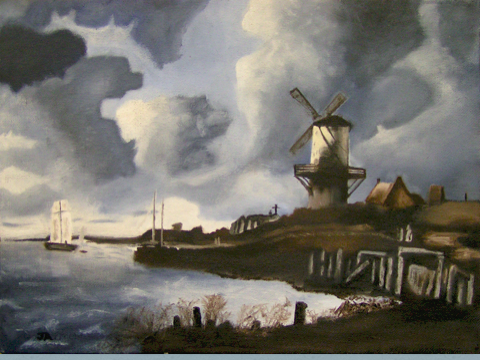In school art may be considered a hobby, a break from real schoolwork, or a chance for kids to let loose and express themselves. At Chesterton Academy of Milwaukee, art is treated as nothing less than a virtue. Theresa Jace, one of the founders of Chesterton Academy of Milwaukee, recently explained the importance of the fine arts within the broader classical liberal arts curriculum.
Chesterton Academy of Milwaukee has been in operation for three years and is based on the Chesterton Model first founded by Dale Ahlquist and Tom Bengston in 2008. Jace explains that these schools were a response to John Dewey’s largely mechanistic system of education pervading schools today, which resulted largely in subjects being isolated from one another.
One of the main goals of the Chesterton Academy is to provide a generalist education, an approach Jace describes as giving a student the “chance to really know his or her strengths and weaknesses.” A fundamental part of Chesterton Academy’s high school curriculum is art: it is required for all students for all four years.
At first glance, this may seem excessive; however, it does not take long after reading a bit of C.S. Lewis and Jacques Maritain to see that this requirement is not only reasonable, but perhaps even necessary.
Chesterton Academy lists “forming tastes,” which it accomplishes through its “fine arts program,” as one of the seven goals of its curriculum. In The Abolition of Man, Lewis claims that the purpose of education is to inculcate fitting and proper sentiments toward objects according to their merit, a sort of “internal adjustment” to reality. Lewis sees this in Plato’s Republic as well: “the well-nurtured youth is one who would … ‘with just distaste blame and hate the ugly … and would give delighted praise to beauty, receiving into his soul and being nourished by it, so that he becomes a man of gentle heart.’”
The idea that one can receive beauty to the extent that it becomes a part of his being is echoed in Maritain’s Creative Intuition in Art and Poetry: “art resides in the soul and is a certain perfection of the soul…a habitus.” A habitus is a “state of possession” that must be developed and strengthened within man: a virtue. As Maritain delineates, the virtue of art is achieved by fostering a creative intuition, that within man that “is anxious to produce…a work at once material and spiritual, like ourselves, and into which something of our soul overflows.”
Not only is this overflowing “a natural superabundance”, but it is a superabundance of the intellect: art is an intellectual virtue that satisfies “the need of the intellect to manifest externally what is grasped within itself.”
Therefore, art naturally fits within a comprehensive liberal arts education. As Christopher Dawson says in The Crisis of Western Education, education broadly defined is “enculturation, … the process by which culture is handed on by the society and acquired by the individual.” Dawson recognizes that since the time man has had culture, art has been a “guardian of the sacred tradition,” a testimony to his spirituality.
Chesterton Academy creates the artist much like Maritain would recommend: First, it cultivates the creative intuition through an appreciation and admiration of fine works produced throughout the ages. Second, it trains its students in the instrumental skills necessary to unleash their own creative intuition to express the beauty conceived in the intellect, that beauty which they are learning in the whole, integrated curriculum.
Jace explains that the fine arts curriculum builds upon itself both in the physical mediums and in tandem with their other classes: Students “start very simply with black and white, proportion, shading, etc.,” while the “art is integrated into the whole curriculum.” Students begin with Ancient Art History, Caligraphy, Drawing in ninth grade; Late Roman, Early Europe, Byzantine, Pastels, Color in tenth grade; Late Gothic, Renaissance, Baroque, Oils in eleventh grade; and finally Classical, Romantic, Modern, Oils, Watercolors in twelfth grade.
Below are some examples of what students at Chesterton Academy have produced, works that Jace says people have trouble believing high school students made when the school displays them at open houses. However, the fine art produced is of little importance compared to the fine individual that results. As Jace concludes, by graduation “whatever you’re called to be, you will have a sense of the good, beautiful, and true…it will be with you wherever.”
Images courtesy of Chesterton Academy:



